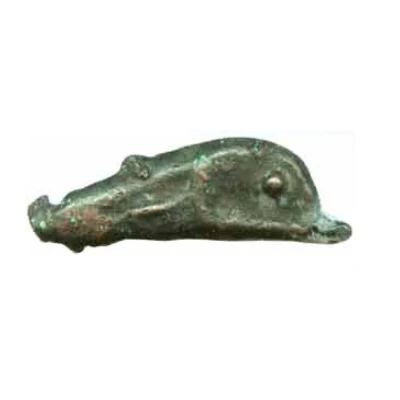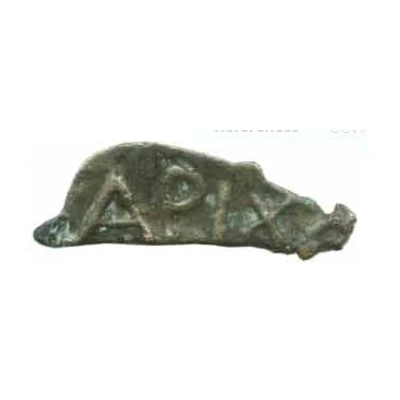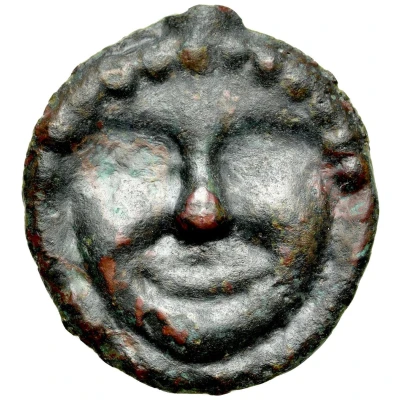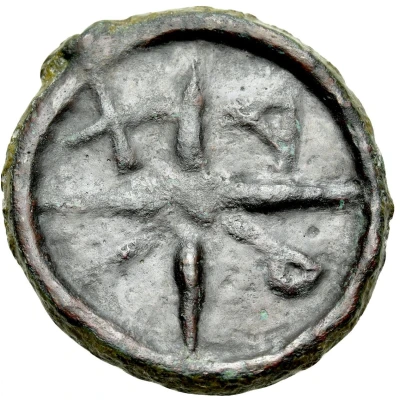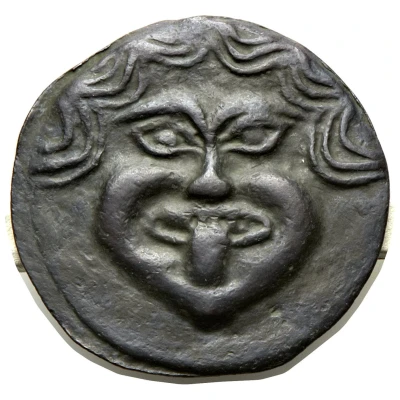
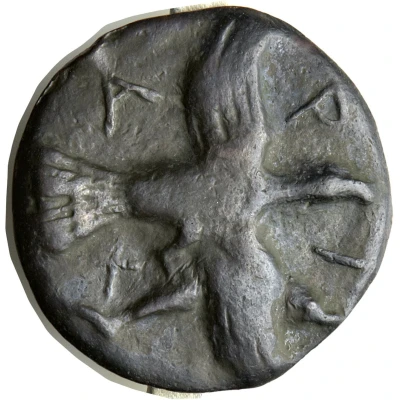

© Heritage Auctions
Bronze Cast Æ 437 BC - 410 BC
| Bronze | 114.76 g | 70 mm |
| Issuer | Olbia (Skythia) |
|---|---|
| Type | Standard circulation coin |
| Years | 437 BC - 410 BC |
| Currency | Drachm |
| Composition | Bronze |
| Weight | 114.76 g |
| Diameter | 70 mm |
| Shape | Round (irregular) |
| Technique | Cast |
| Demonetized | Yes |
| Updated | 2024-10-10 |
| Numista | N#378436 |
|---|---|
| Rarity index | 97% |
Reverse
Sea eagle flying right, wings spread, holding in its talons a dolphin right; A-P-I-X in angles formed by wings.
Script: Greek
Lettering: A-P-I-X
Comment
Olbia, a colony of Miletus located at the junction of the Hyspanis and Borysthenes rivers in the wilds of Scythia, grew prosperous on trade between the nomadic Scythians and the Greeks. It employed a unique form of coinage consisting of cast bronzes of various sizes and shapes. The smallest Olbian bronzes were made in the shape of dolphins; larger denominations bore a facing gorgon's head backed by a sea eagle clutching a dolphin. Like the early Romans, the Olbians apparently traded these pieces at "true," as opposed to token value, meaning the largest denominations were truly immense and heavy, as seen with this extraordinary piece.Interesting fact
The Bronze Cast Æ coin from Olbia (Skythia) was used as a form of currency in the ancient Greek city of Olbia, which was located in modern-day Ukraine. The coin features an image of a Greek goddess on one side and a wheel on the other, symbolizing the connection between the city and the Greek world. Despite being made of bronze, this coin was considered a valuable form of currency in its time and was used for trade and commerce.
Price
| Date | Mintage | VG | F | VF | XF | AU | UNC |
|---|---|---|---|---|---|---|---|
| ND (437 BC - 410 BC) | - | - | - | - | - | - |
Values in the table are based on evaluations by sales realized on Internet platforms. They serve as an indication only for Bronze Cast Æ (437 BC - 410 BC) coin.
